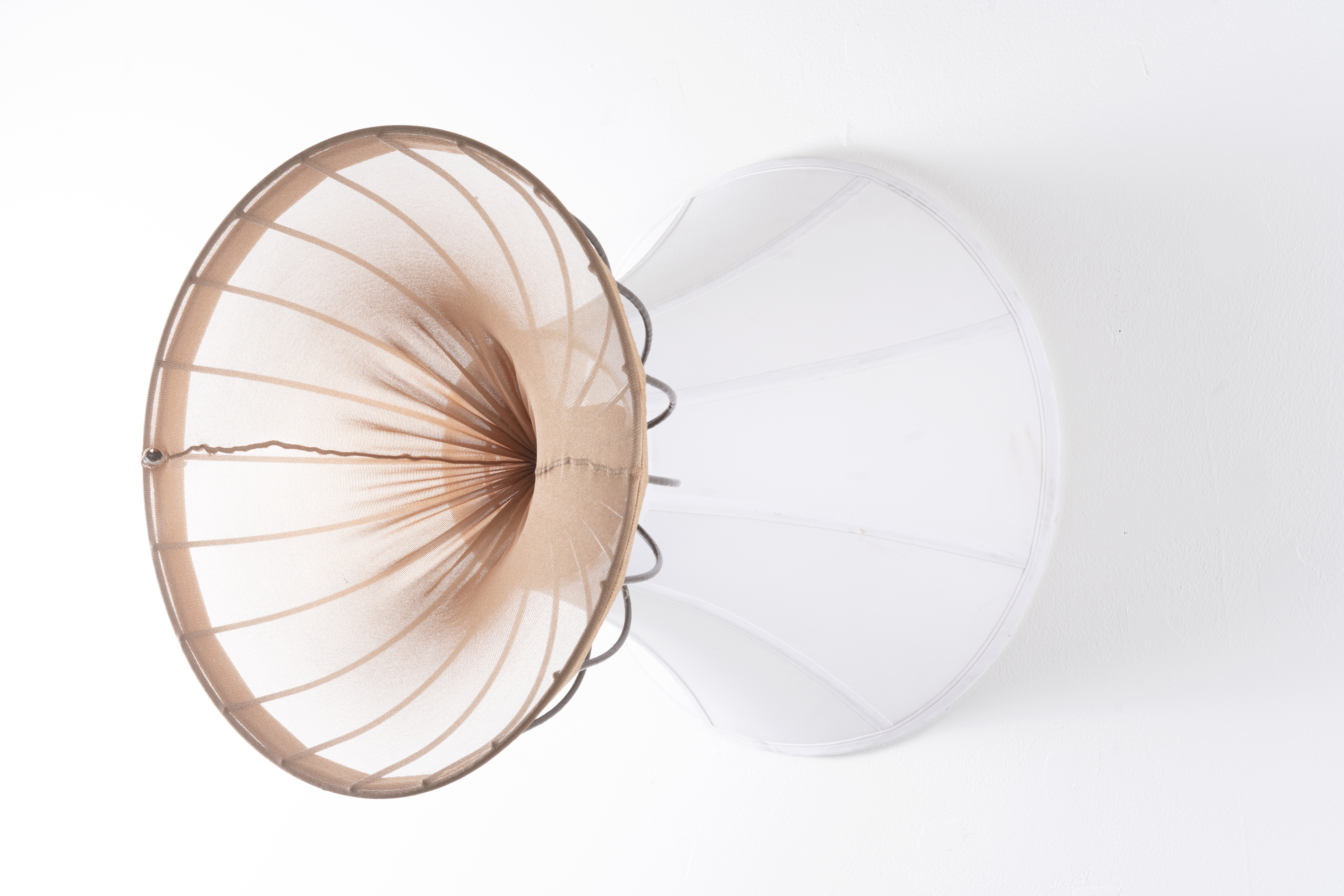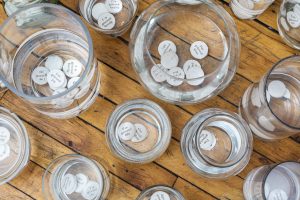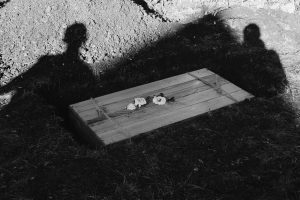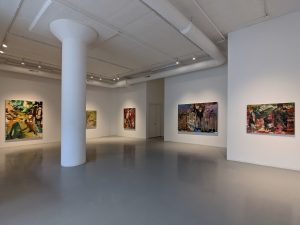“Intimate Justice” looks at the intersection of art and sex and how these actions intertwine to serve as a form of resistance, activism, and dialogue in the Chicago community. For this installment, we talked to Logan Square artist, sculptor, and papermaker, Molly Blumberg. The recent SAIC MFA grad caught my eye while scanning the internet for new artists. Working with fibers and transforming them into fleshy, lumpy sculptures was enough to steal my attention. In this interview, Blumberg and I discuss making a mess, exploring with materials, and fragmenting the body.
S. Nicole Lane: Your work is very rooted in process and playfulness. How important is exploration and experimentation in your work?
Molly Blumberg: Experimentation and exploration are the foundations of my practice. When I’m working in my studio, I rarely have a finished piece in mind and I allow the materials to dictate a fair amount of the work. I’m a process-based maker: I want to physically get my hands into my materials, make a mess, and feel my way through it.
My work is grounded in materials that undergo quick physical and chemical state changes. I’ve been working in handmade paper for about ten years now and I find constant joy and excitement in how the material is an active participant in my practice. Papermaking is an incredibly physical process that involves a substantial amount of negotiation and cooperation between maker and material. For many years, my work was almost exclusively based in paper, but more recently I’ve been exploring new materials and methods of production [that] mirrors and engages these ways of working. Many of the materials I use force me to operate within time constraints; as paper dries and plaster cures, I have to make decisive choices that are often based on nothing more than my intuition. It gives my artwork an urgency, an intensity of engagement around the moment of making.
Within a contemporary academic setting, intuition and process can sometimes feel like dirty words. I often find myself in a position of having to fight for the legitimacy of creating meaning through materiality, or for regarding intuition as a form of embodied knowledge. As many craft people know, our bodies often know the way around the material in advance of conscious thought. I like to let my body do the decision-making. At the same time, I purposely work with materials that exert their own kind of agency. The result lies between what I can control as a maker and what [the material] dictates. My sculptures exist in tension: weighted down and arrested in implied motion, like a snapshot capturing movement and existence in something that is frozen. Through an extreme engagement with materiality, these sculptures capture movement and transformation [while] expressing [the] physicality of the ways [in which] bodies engage with the world.

SNL: The female body is essential to your practice. Where do you gain inspiration from? What types of bodies do you imagine when creating a piece?
MB: Rather than finding inspiration in images of bodies, I pull from bodily experiences when creating a piece. Inherently, a lot of my inspiration comes from my own body and the experiences of my body (as it’s the only one I truly know the feeling of having). I think a lot about the sensations of bodies and the mechanics of bodies: how skin stretches across muscle and bone, how fat and flesh can pucker and bulge, how bodies can fold and slump and stretch with and against gravity. I aim for a visceral reaction. Instead of the viewer intellectually understanding the object as another contained discrete body separate from oneself, I hope that they feel the effect of the sculpture within their own body, a gut reaction. I try to disrupt an understanding of a “complete” or “normal” body using abstraction and fragmentation and to position each human body as a precarious being that is uncontrollable and unpredictable.
Humor is important in my work and in how I explore bodies, but often it’s hard to explain exactly why something is funny. I think there’s a reason that childhood curiosity and potty-humor go hand-in-hand: bodies can be the site of incredibly weird, funny, and joyful experiences before they become so loaded. I also love a good art-historical joke; pulling from depictions of the body that have become part of the western canon and fragmenting, repositioning, confusing, and reframing them. I enjoy picking apart these images because they can exist on multiple levels. They create context for those who understand the history of the images–like little winks and nods–as I try to upend the readings of these figures. But I also don’t want my work to be exclusively for an art community familiar with the canon. I work with the elements of these images that are purely bodily, referencing poses and motions that are accessible to a wider audience. Even without knowledge of Greek antiquity, modernism, postmodernism, etc., the viewer can understand the natural tilt of a torso in repose, or the awkwardness of balance, or the weight of gravity pulling down on a tired body.

SNL: I’m so drawn to much of your work because it resembles orifices and lumps. These objects queer the body, as I can look at them and say, “this is bodily,” but I’m not entirely sure what I’m looking at either. The materials you work with expand on this type of elasticity and fleshiness. Can you discuss the relationship you have with the materials you choose?
MB: I have a really intimate relationship with my materials. Papermaking was my first material love. It goes from wet to dry, liquid to solid. It holds evidence of once being wet, of being flowing, soft, malleable, and a little bit wild. The transformation is my favorite part of the process–it’s magical. As the paper dries, it becomes evident how incredibly active the material is; it is strong, willful, and only somewhat controllable. Paper gains its strength through its state changes. As the water leaves the body of the sheet of paper, the fibers push together to fill its gap and to bond. Because my work addresses the materiality of the human body—how it feels to be an ever-changing, perishable thing—I want this moment of change to hold weight. It conveys the body as a site of state changes, not just an arc of growth and decay. Our bodies are constantly breaking down and rebuilding. Rather than viewing them as solid [or] stagnant, I want to celebrate the constant state of change that we all embody.
I’m drawn to materials that go through some kind of transformation as well as offer a sense of grittiness and discomfort. I love playing with how my hand as an artist can cause some confusion in our material understanding: making paper that can reference skin, solid plaster that can appear soft and supple, cast glass that can seem wet and gelatinous. I’m interested in how materials push and pull against each other, how external form can be defined by internal functionings of a piece.. A simple knot in a pair of tights can create bodily folds, creases, and puckering.
SNL: You recently graduated from SAIC with an MFA. How was finishing out your final thesis project through a pandemic? How has this affected your work?
MB: It was incredibly tough, both artistically and emotionally/mentally. It was really sad and disappointing to lose so much that comes with completing an MFA program. With our thesis show and graduation canceled, we lost the chance to celebrate our work and our community, and we were left without much closure. I never got to finish the work that I was intending to make for my final thesis project. The school closed so abruptly that our studios mostly sat there as time capsules while we all tried to figure out how to finish out our degrees from home. I had a few pieces sitting out in my studio that I had feverishly worked on in the days prior to the lockdown (which I was still somewhat oblivious to), and for months I thought about them and how I could “finish” them when I could get back into my studio. I finally moved out of the studio at the end of July and I think that these sculptures were actually fully realized as I had left them. There is such an urgency and raw gesture to them that I might have lost if I had the ability to continue fussing over them for weeks and weeks.
Once campus closed, I had no access to my papermaking equipment or any facilities, so my work shifted towards incorporating materials and objects that I could use in my apartment. I’ve been struggling over the course of grad school to shake my identity as a traditional papermaker. It is a material and tool I’m heavily invested in, but I’m not so interested in sitting directly within its history and tradition. The pandemic really forced my hand in making that leap. I realized pretty quickly that I struggle to work on a smaller scale, so after a few torturous weeks (months?) of trying to work on my kitchen table, I decided to start cannibalizing my belongings to make body-sized sculptures out of whatever I could get my hands on. I’ve had a hard time articulating my gravitation towards found objects, but in the time spent living and creating within my home and using these domestic objects, I’ve come to think that our bodies are not so separate from the objects and contexts of our surroundings.
My production also slowed down immensely, which is something that I’ve struggled with. But as my group of close friends from school keep reminding each other, production and productivity are not the same, and sometimes pauses are healthy.
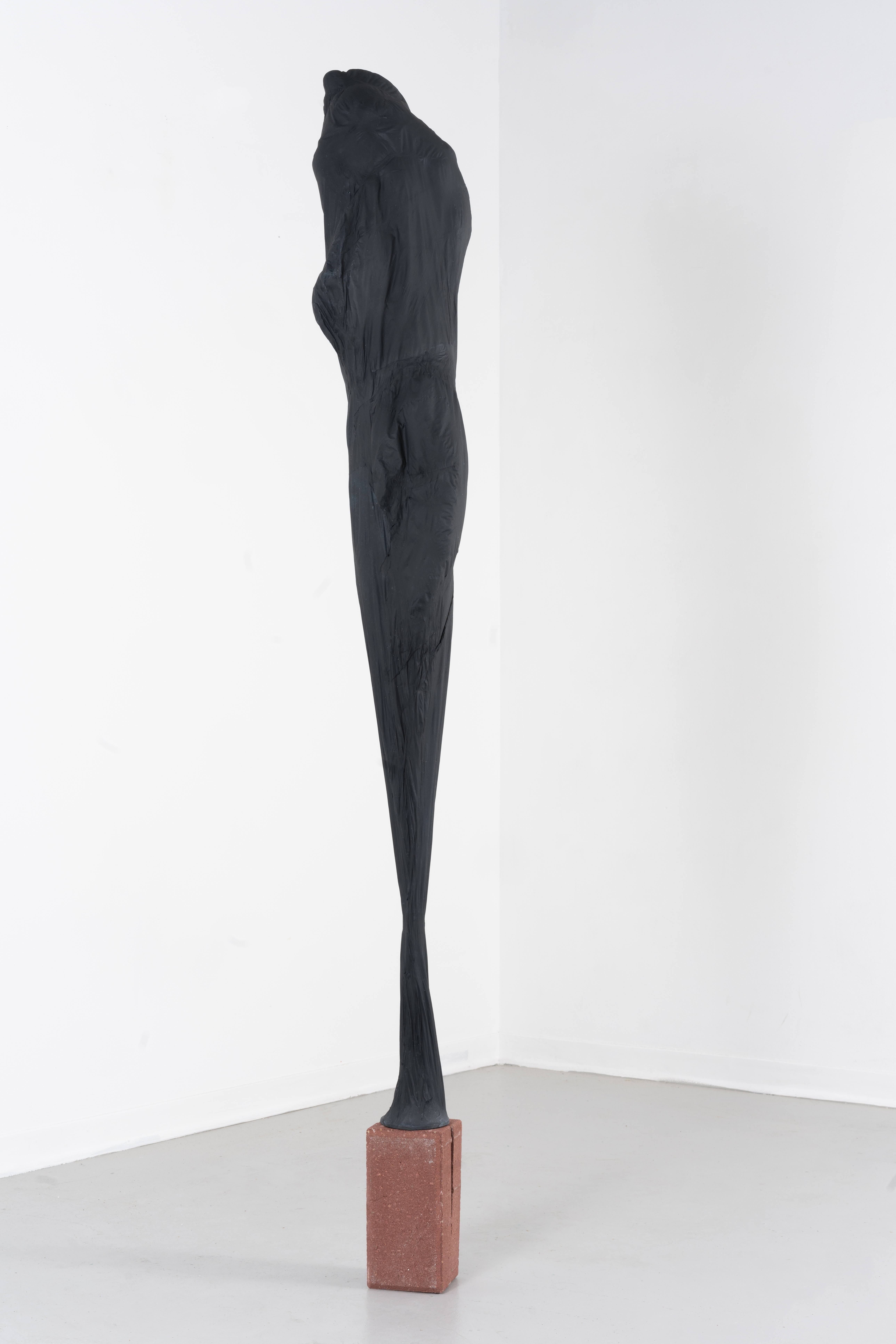
SNL: Can you expand on how your sculptural practice nods at many feminist artists working in minimalism as well as with textiles and fabrics?
MB: When my mother was in her 20s she took ceramics classes from a local artist, Margaret Rosenfelt, who remained a part of her life, and subsequently part of mine, until Margaret’s death when I was in high school. She was the first “true” artist I’d ever known. She was a ceramicist, weaver, metal smither, and all-around badass maker. She’d escaped Nazi Germany and never lost her thick German accent. She exhibited at the World’s Fair [in New York and Montreal]. By the time I got to know her, she lived alone as a childless widow. Everything about her—her history, her temperament, her surroundings—existed with and through her art. I think a lot about how that seemingly natural gesture of synthesizing oneself and one’s art can be a bold feminist statement. It explores the hierarchy of fine arts, elevates the domestic and traditional women’s work, while simultaneously breaking the barriers between the self/body and the outside world. I have such clear and poignant memories of visiting her in her apartment, sitting on the couch eating sushi, and watching figure skating while surrounded by her life’s work. We were a part of her art and it was a part of us.
I owe so much of my practice to the feminist artists who came before me [who] did the hard work of breaking traditions within the male sphere of sculpture (and while we’re at it– contemporary art, minimalism, etc…). The ferocity that they brought to their respective works allows me to slide into my own feminist practice with playfulness and humor. A lot of my work is supported by the pillars that they built (and that as a young artist I certainly took for granted). I had a comfort and familiarity with these practices, and so as I was developing my own work, I believed that a lot of it came intuitively. I had to really work to pick it apart to be more intentional and assertive with the moves I was making.
As an undergraduate, I was certainly guilty of being derivative of some of these women. I was obsessed with Eva Hesse, how her material investigations and repetition could bring a bodily aspect to industrial materials. There was a wildness to the way she handled her materials; repetitive action never entirely created repetitive form. The objects seem to ooze, distort, and creep out towards the viewer. I’ve always been in awe of the way that, through abstraction, she imprints the human body onto her materials, allowing them to enact rather than illustrate the disorderly body.
My early-early work (I think I’m still hopefully making my early work) sat within this sense of abjection. I wanted to make the big, bold, uncomfortably bodily work that my icons made: the haunting and inviting yet intimidating sculptures of Louise Bourgeois, the deeply transformative assemblages of Louise Nevelson, the delicate and uncomfortable work of Doris Salcedo. As I look back on these and other significant influences that I’ve had (my mind was absolutely blown by a Chakaia Booker exhibition that I saw at the deCordova Museum in 2010), I realize that I’m incredibly drawn to work that makes me feel my own body through an encounter with materiality, and I think that is a deft feminist move to disarm a viewer’s understanding of their own body as whole, or separate, or contained and controlled.
I’ve borrowed and learned from many of these strategies: embodiment through abstraction, fragmentation as a disruption that also inserts new possibilities, an irreverence for traditional art materials suggesting that all modalities of life can seep into one another (as well as in and out of us). As I’ve developed, I’ve held on to these strategies, but I’ve also introduced a sense of humor and subtle slyness that wasn’t as present in my previous work. Humor is an incredible survival tactic, and one that I’ve had to apply to my own body as I’ve navigated illness, pain, and all-around unpredictability. In creating work that is lumpy/sexy/fleshy, both specifically and ambiguously bodily, I hope that we can laugh at our own bodies and also question exactly why we’re laughing.

SNL: In this column, I interview artists who create sensually and sexually charged work. This can be very loosely defined, however, and I don’t necessarily look at your work and see these objects as sexualized. Do you see these pieces as sexual or do they exist on their own as appendages?
MB: I think my work exists somewhere in the middle. While I don’t entirely aim to illustrate a body in any specific action or setting, I want to play with how it feels to be a body and to have a body, and sexuality is inherent in that human experience. Oftentimes, when we encounter a sexualized body or object, it is tied to themes of lust, desire, shame, mystery, etc., but I also hope to add humor, awkwardness, joy, and fleshiness to that discussion. My work certainly references sexual body parts, orifices, and appendages, but it shifts them away from a traditionally sexualized read and instead focuses on an uncanny and humorous interaction. Many of my sculptures are ambiguously bodily (simultaneously breasts, bellybuttons, anuses, ear canals). So while they can offer a sexual moment, they might more accurately be simply fleshy encounters with material. They’re somewhat autonomous, but they map back on to the body of the viewer in a way that can be confusing and unexpected. So in a way, perhaps my work desexualizes the sexual body, or it tries to expand on how we engage with both objects and our own bodies as sexual beings.
Featured Image: Orifice by Molly Blumberg, lampshade, metal wire bowl, nylon stockings, 18 x 18 x 24″. This assemblage piece hangs on the wall where the white lampshade attaches to the wall and a metal wire bowl comes out from the top of the lampshade. Nylon stockings, peach colored, cover the metal wire bowl. The viewer is looking at the piece from an angle, not straight on. Courtesy of Molly Blumberg.

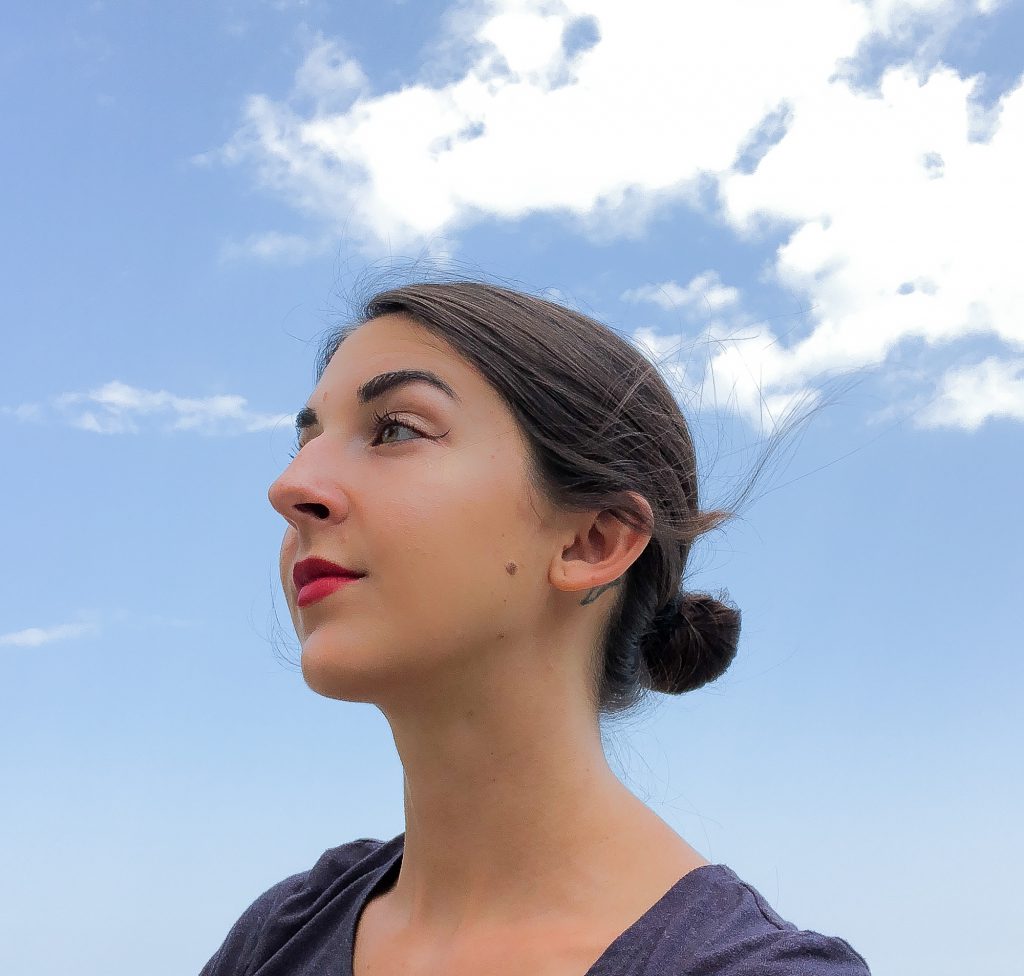
S. Nicole Lane is a visual artist and writer based on the south side. Her work can be found on Playboy, Rewire, MedTruth, O.School and other corners of the internet, where she discusses sexual health, wellness, and the arts. She is also an editorial associate for the Chicago Reader. Follow her on Twitter. Photo by Jordan Levitt.
